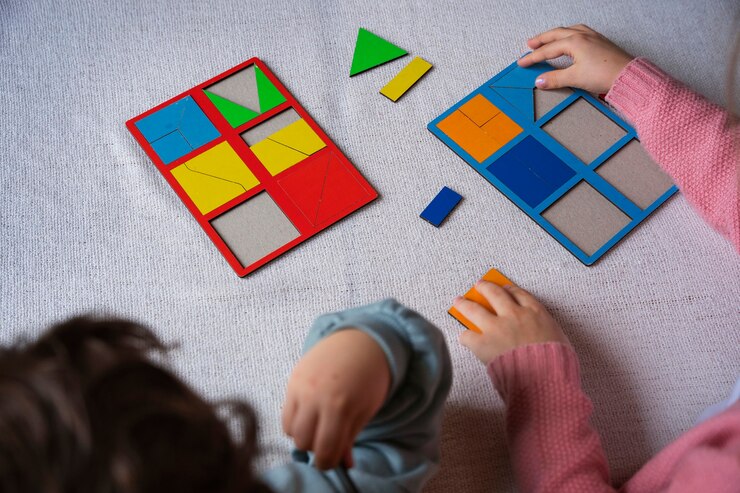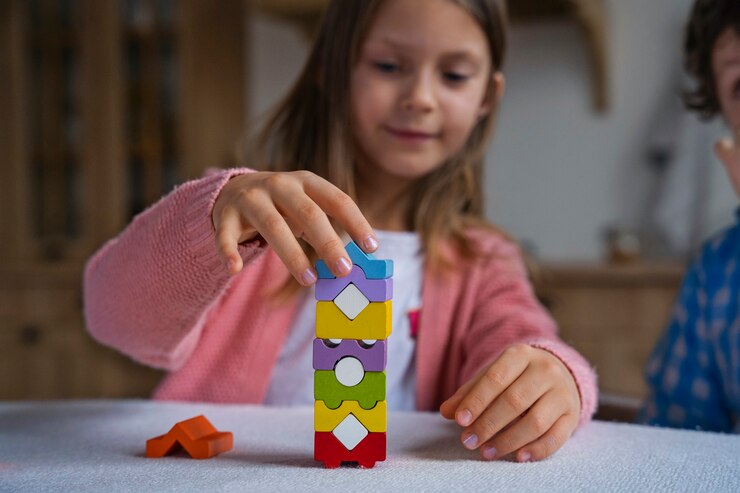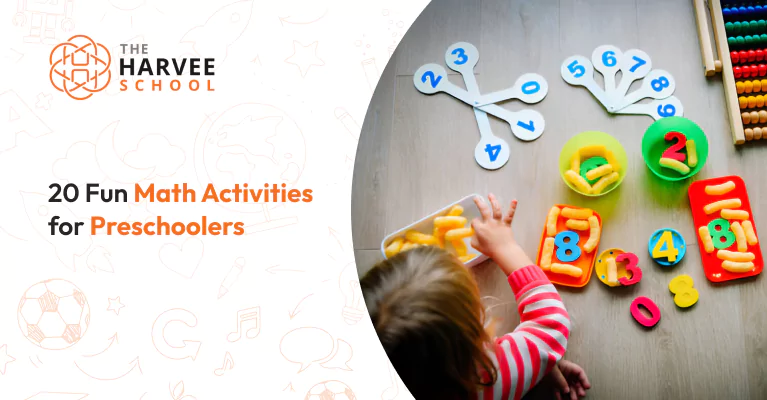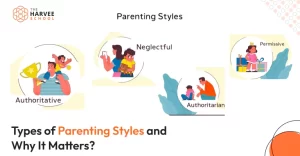20 Fun Math Activities for Preschoolers
Math is an essential part of early childhood education. By making math playful, kids are more likely to enjoy learning and build a strong foundation. To make math less boring, here are 20 exciting math activities that parents and educators can use to spark a love for numbers, shapes, and patterns in preschoolers.
1. Counting with Everyday Objects
Using objects like buttons, coins, or blocks to practice counting. Encourage your kids to count them aloud as they move each object from one pile to another. You can also ask questions like, “How many red buttons are there?” to promote recognition and sorting.
2. Shape Hunt
Go on a “shape hunt” around the house. Ask your child to find objects that are circles, squares, triangles, and rectangles. This activity helps preschoolers identify and categorize basic shapes in the world around them.
3. Number Matching with Clothespins
Write numbers on one side of index cards and place corresponding dots on the other side. Give your child clothespins and let them match the numbers with the right number of dots. This strengthens fine motor skills while teaching number recognition and counting.
4. Color and Shape Sorting

Fill a bin with objects of different shapes and colors (like toy blocks or foam shapes). Ask your preschooler to sort them by color or shape. This activity helps develop categorization and sorting skills, which are fundamental to early math learning.
5. Pattern Play with Beads
Using beads or colored buttons, show your child how to make simple patterns (e.g., red, blue, red, blue). Then encourage them to continue the pattern or create their own. Patterns are a great introduction to sequencing and early algebraic thinking.
6. Counting Songs
Songs like “Five Little Ducks” or “Ten in the Bed” are great for practicing counting in a fun and musical way. Singing while counting reinforces number sequences and is perfect for auditory learners.
7. Playdough Shapes
Using playdough, ask your child to create different shapes like circles, squares, and triangles. You can also create numbers out of playdough and use them to count out small objects. This tactile activity combines math with sensory play.
8. Math Bingo
Create a simple bingo card with numbers, shapes, or colors in each square. Call out the numbers or shapes and have your child mark them on their card. Whoever gets a row or column first wins! This is a fun way to reinforce recognition of numbers and shapes.
9. Building Towers with Blocks

Give your child a set of building blocks and ask them to build towers of different heights. Count the blocks in each tower together. You can also compare the towers by asking, “Which one is taller?” or “Which one has more blocks?”
10. Nature Counting
Go on a nature walk and collect different objects, such as leaves, rocks, or flowers. Once back home, count them together. You can also sort them by size or shape, encouraging math skills in a natural, outdoor setting.
11. Dice Roll Counting Game
Use a pair of dice and a board with numbers written on it. Roll the dice and let your child count the dots. They can then move a marker or toy to the corresponding number of spaces on the board. This game teaches number recognition and counting in a playful way.
12. Number Tracing
Print out large numbers and give your child a crayon or marker to trace them. This helps with number recognition and fine motor skills, setting a foundation for writing numbers later on.
13. DIY Measuring Station
Set up a small measuring station with rulers, tape measures, and cups for liquid measurements. Let your child explore the different tools and measure toys or household objects. This presents the idea of comparison and measurement.
14. Count the Snacks
During snack time, give your preschooler small snacks like crackers or fruit pieces. Ask them to count how many pieces they have, and then eat a few. Ask, “How many do you have left?” This entertaining exercise presents basic subtraction in an enjoyable setting.
15. Shape Puzzles

Use shape puzzles or create your own by cutting different shapes from colored paper. Ask your child to fit the shapes together to form pictures or patterns. This activity strengthens spatial reasoning and shape recognition.
16. Calendar Counting
Teach your preschooler about the days of the week and months of the year using a calendar. Count the days together and mark off important events or upcoming holidays. This reinforces number recognition and the concept of time.
17. Hopscotch with Numbers

Draw a hopscotch grid outside with chalk, and write numbers in each square. Let your child hop through the grid while counting aloud. This combines physical activity with math, making it an exciting way to practice numbers.
18. Button Sorting
Gather a variety of buttons and ask your child to sort them by color, size, or number of holes. Sorting activities build categorization skills and introduce the concept of sorting by attributes—key in early math learning.
19. Sticker Math
Use stickers to help with counting and addition. Give your child a few stickers and ask them to place them on paper. Then, ask questions like, “If you add two more stickers, how many will you have?” This can help kids understand addition in a visual way.
20. Shape Collages
Cut out different shapes from colored paper and let your preschooler glue them onto a larger sheet to create a picture. Talk about the shapes they’re using and how many of each they have. This helps with shape recognition and counting.
Useful Tips for Parents and Teachers
Take It Slow: Preschoolers absorb information at their own pace. Don’t rush the process. Allow them to explore, make mistakes, and learn through repetition.
Be Consistent: Regular practice helps reinforce learning. Incorporate math into daily routines, like counting objects during snack time or identifying shapes while walking outside. Consistency creates a strong foundation.
Use Encouragement: Positive reinforcement goes a long way. Praise your child’s effort, not just their success, to keep them motivated and curious about learning.
Create a Playful Environment: Learning should feel like play for preschoolers. Incorporate toys, games, and fun challenges to make math enjoyable.
Follow Their Interests: If your child loves animals, use animal-themed counting games. Tailoring activities to their interests helps them stay excited and involved in the learning process.
Be Patient: Every child learns differently, so patience is key. Avoid putting pressure on them. Instead, provide gentle guidance and let them explore concepts naturally.
By applying these tips alongside the activities, you’ll foster a love for learning and create a positive experience that helps children grow at their own pace.
Conclusion
Preschoolers learn best when math is fun and hands-on. By incorporating these math activities into your child’s routine, you can help them develop important skills like counting, sorting, measuring, and recognizing patterns—all while having a great time. These activities lay the foundation for future math learning, and more importantly, they show kids that math can be a playful and exciting part of everyday life.






